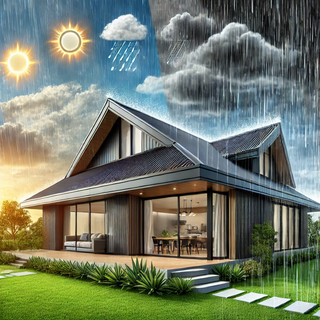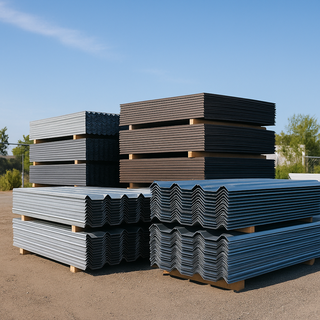Metal roofing has become increasingly popular due to its durability, energy efficiency, and aesthetic flexibility. However, several myths still persist about metal roofing that can deter homeowners from choosing this option. In this extensive guide, we'll debunk these common myths and reveal the truths about metal roofing, helping you make an informed decision for your home.
Myth 1: Metal Roofs Are Noisy
Truth: This is one of the most common misconceptions about metal roofing. Many believe that metal roofs are noisy, especially during rain or hail. However, when installed correctly over a solid substrate and with proper insulation, metal roofs can be as quiet as other roofing materials. In fact, the insulation layers can make them even quieter than traditional roofs.
Myth 2: Metal Roofs Attract Lightning
Truth: Metal does conduct electricity, but it does not attract lightning. Lightning strikes are most influenced by the height of a structure, its geographical location, and the local climate, not by the materials used. Importantly, because metal roofing is non-combustible, it can actually be safer during a lightning strike than other types of roofing materials.
Myth 3: Metal Roofs Are Prone to Rust
Truth: Today’s metal roofs are designed to resist rust and corrosion. They are treated with high-tech finishes and coatings that prevent rust. Materials like galvanized steel and aluminum are specifically chosen for their rust-resistant properties, ensuring that your roof stays in excellent condition for decades.
Myth 4: Metal Roofs Are Heavy
Truth: Contrary to this belief, metal roofs are typically lighter than traditional tile or asphalt shingle roofs. The lightweight nature of metal roofing materials makes them suitable for a wide range of buildings and can reduce the load on your home’s structural support systems.
Myth 5: Metal Roofs Lack Style Options
Truth: Metal roofs offer a wide array of designs, colors, and finishes. They can mimic the look of shingles, clay tiles, cedar shakes, and even slate roofing. This versatility allows homeowners to choose a style that perfectly matches their home's architecture and personal preference.
Myth 6: Metal Roofs Are Too Expensive
Truth: While the initial cost of a metal roof can be higher than that of asphalt shingles, it is a cost-effective option in the long run. Metal roofs have a lifespan of 40-70 years, which is two to three times longer than traditional roofing materials. The long-term savings on maintenance, replacement, and energy costs make metal roofs an economically wise choice.
Myth 7: Metal Roofs Are Not Energy Efficient
Truth: Metal roofs are one of the most energy-efficient roofing options available. They reflect solar radiant heat, which can reduce cooling costs by 10-25%. This reflectivity means that metal roofs can keep your home cooler in the summer and reduce your energy bills.
Conclusion
Debunking these myths is essential to understanding the true benefits and capabilities of metal roofing. By providing factual, evidence-based information, this guide aims to clarify misconceptions and show why metal roofing could be an excellent choice for your home. Metal roofing offers unmatched durability, aesthetic flexibility, and energy efficiency, making it a superior roofing solution for those looking to enhance their home’s performance and appearance for years to come.






